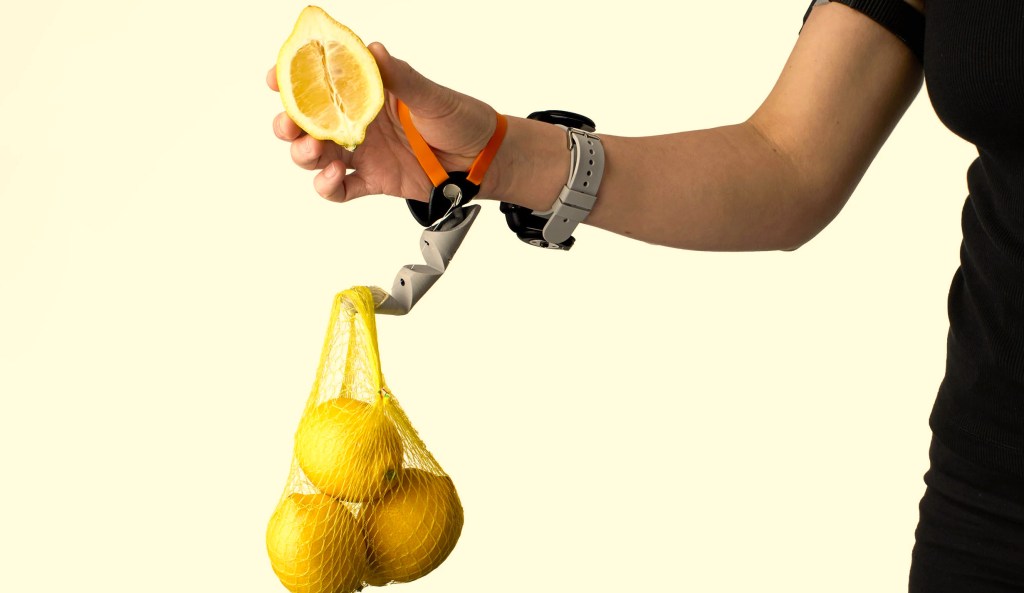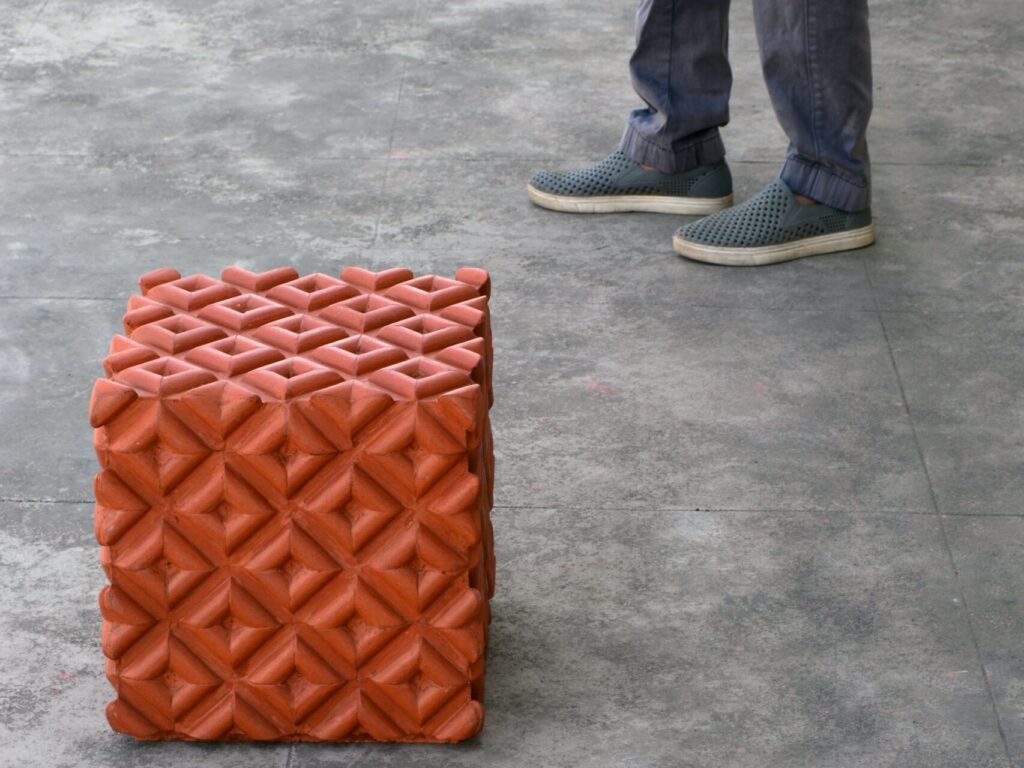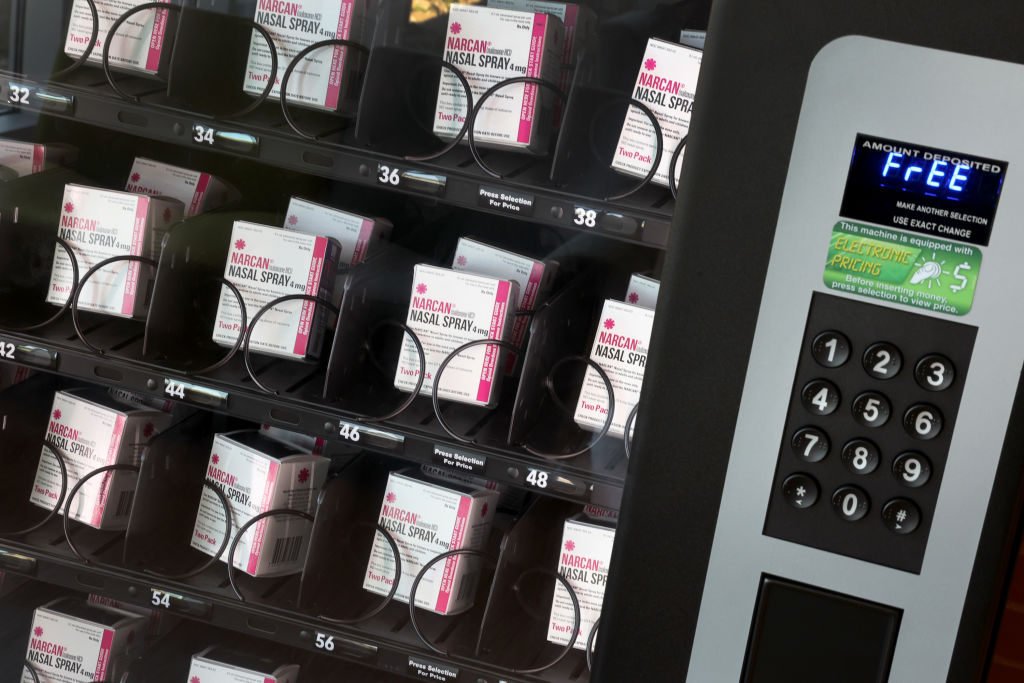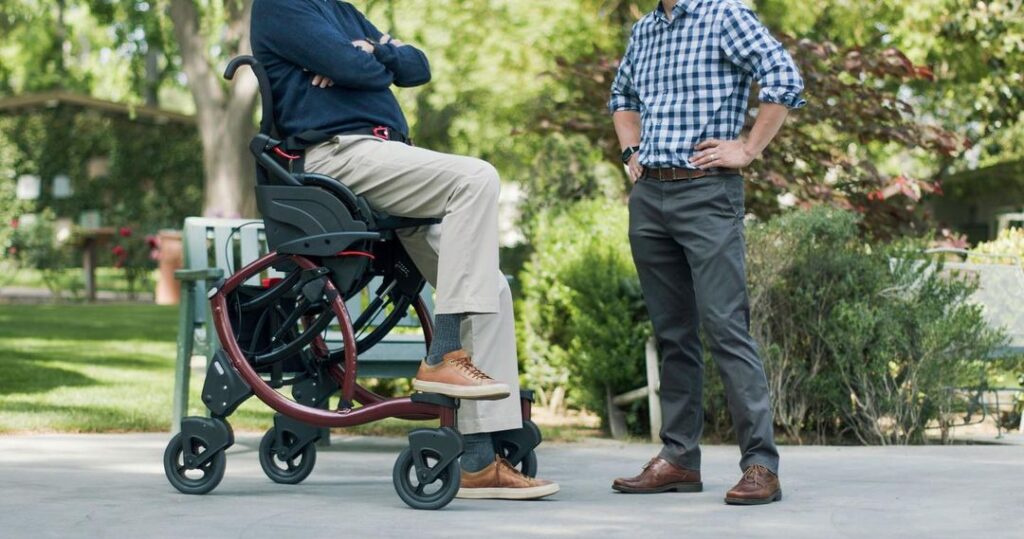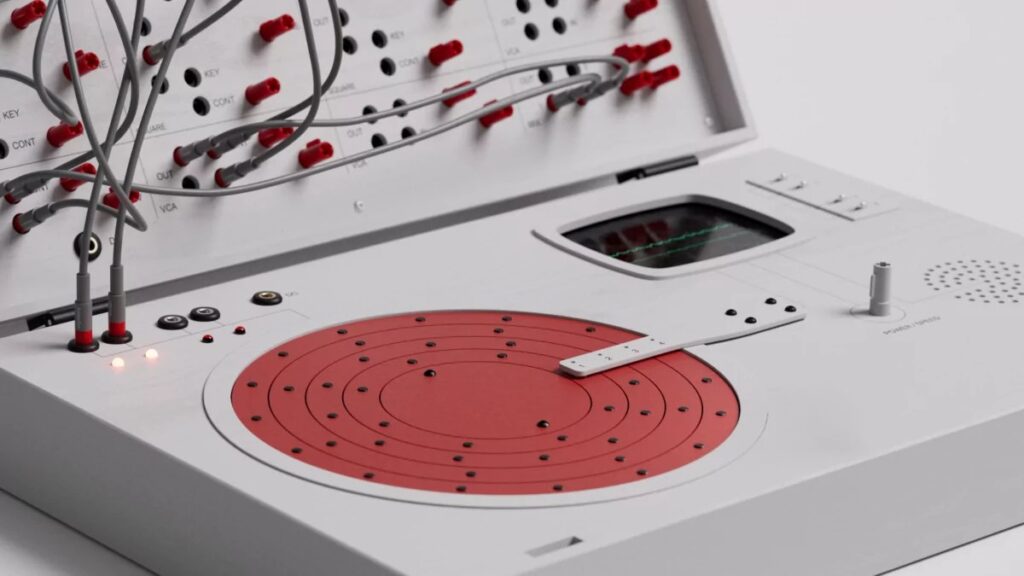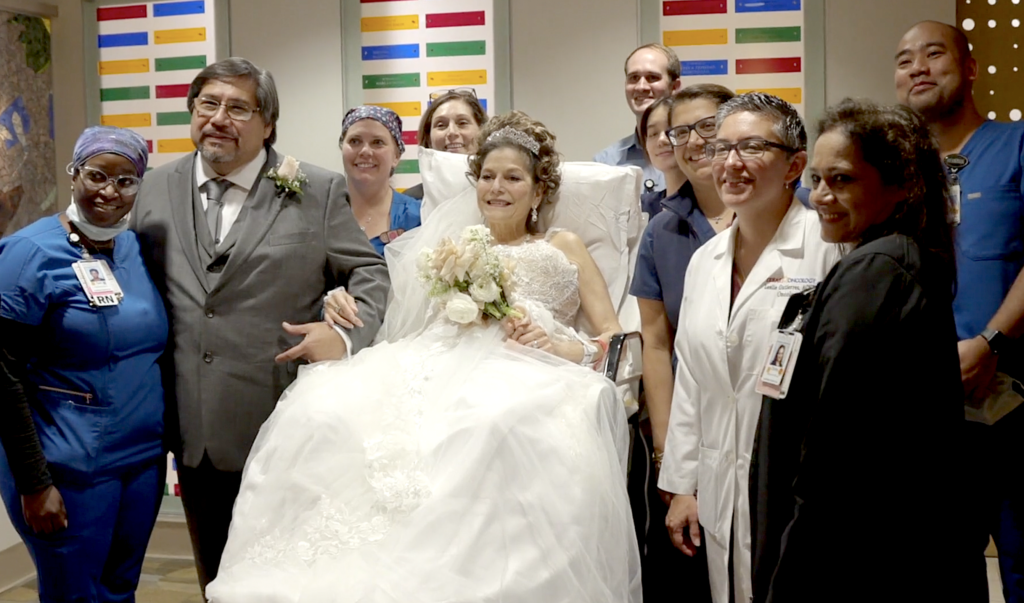Higher primates’ two opposable thumbs allow for manipulating objects in a much more precise manner than is possible for species without the appendages. And a new, robotic “Third Thumb” could take that skill a step further, while also increasing interaction with the physical world for people with disabilities.
Augmentation designer Dani Clode created the wearable, 3D-printed thumb to boost users’ range of movement, enhance grasping capability, and expand carrying capacity. The device, which straps onto the palm and extends from the side opposite to the biological thumb, is powered by two motors on the wrist that are controlled by pressure sensors attached to wearers’ feet.
The tool is being developed in collaboration with the University of Cambridge and Imperial College London. Clode and colleagues tested it out on 596 non-disabled people ages 3-96 at a science exhibition in 2022, publishing the results late last month. Of those who trialed the Third Thumb, 98% were able to “successfully wear, operate, and perform a task” during the first minute of use.
Next, the team plans to pilot the device in populations with motor disabilities or impairments, and adapt the design to be more inclusive — opening its usage up to those who have upper limb differences or have had a stroke, for example.
“Technology is changing our very definition of what it means to be human, with machines increasingly becoming a part of our everyday lives, and even our minds and bodies,” study co-author Tamar Makin of Cambridge’s Medical Research Council Cognition and Brain Sciences Unit said in a statement.
“These technologies open up exciting new opportunities that can benefit society,” he continued, “but it’s vital that we consider how they can help all people equally, especially marginalized communities who are often excluded from innovation research and development.”
So far, the Third Thumb has proved simple to use and easy to acclimate to. Researchers noted in the paper that participants’ success was not influenced by gender, right- or left-handnesses, or a proclivity for hobbies involving the hands. They did observe that performance was generally poorer among children under 11, something that will hopefully improve in future designs.
“Given the diversity of bodies, it’s crucial that the design stage of wearable technology is as inclusive as possible,” said Clode. “It’s equally important that these devices are accessible and functional for a wide range of users. Additionally, they should be easy for people to learn and use quickly.”
